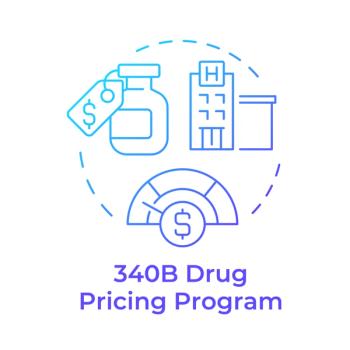
Patients Win a Small Victory in Battle over Copay Accumulators
Last week, a judge struck down a 2021 federal rule that allowed insurance companies to exclude pharmaceutical company copay assistance from annual deductibles.
Insurance companies and pharmacy benefit managers now have to follow a 2020 rule in which copay assistance “accumulator” programs can only be applied to brand name drugs that have generic equivalents available. That is because last week, a U.S. District Court for the District of Columbia struck down a
The HIV+Hepatitis Policy Institute, along with Diabetes Leadership Council and the Diabetes Patient Advocacy Coalition, won their lawsuit against the U.S. Department of Health and Human Service over accumulator programs.
“While this victory will certainly help millions of patients, it is a shame that so many have been forced to pay thousands of dollars in extra costs each year for their prescription drugs forcing us to take this legal action,” George Huntley, CEO of the Diabetes Leadership Council and the Diabetes Patient Advocacy Coalition, said in a press release.
Over the last few years, PBMs and insurance companies have implemented restrictions that put more of the costs of specialty medications on patients with copay accumulator programs, Accumulator programs shift costs to patients, and critics say they amount to double-dipping because the plan is getting both the value of the copay and the patient deductible.
According to a 2023 report from The AIDS Institute, at least two-thirds (64%) of health plans in the country include a copay accumulator policy. And more than half (55.7%) of American private-sector workers were enrolled in high-deductible plans in 2021, the highest on record and the eighth straight yearly increase, according to a
The patient groups file their lawsuit in August 2022. The Department of Health and Human Services
In last week’s court decision, Judge John D. Bates sided with the patient groups, saying that the rule was arbitrary because it allows insurers to decide for themselves whether copay assistance is included in the definition of “cost-sharing.”
Much of the discussion on this issue centered around the value and impact of copay assistance and not on the impact of the accumulator programs, Carl Schmid, executive director of the HIV+Hepatitis Policy Institute, said in an interview.
“The judge said that based on plain reading of the ACA statute, copay assistance should count toward a deductible because it is payment made for or on behalf of a patient,” Schmid said.
Copay accumulators can mean that patients are not adherent to their medications, according to a
Patients, Mercalis said in the brief, often don’t know their assistance has not counted toward deductibles. Then when assistance runs out, patients may have to pay high cost to access their medications. The company cited data from a 2018 IQVIA study that found that 69% of new patients with an out-of-pocket cost above $250 abandon treatment.
“The purpose of the ACA likewise confirms that patient assistance provided by drug manufacturers qualifies as cost-sharing applicable to annual maximum limits because it helps to ensure that meaningful access to coverage is secured for patients who, otherwise, would have coverage in name only,” Mercalis wrote in the brief.
Additionally, copay accumulator programs can be discriminatory. A recent study in the
Going forward, the challenge, Schmid said, is enforcement of the rule on accumulator plans, which would fall to the state insurance commissions. Some states also have their laws that don’t allow accumulator programs for drugs without generic competition. In fact,
Newsletter
Get the latest industry news, event updates, and more from Managed healthcare Executive.






















































